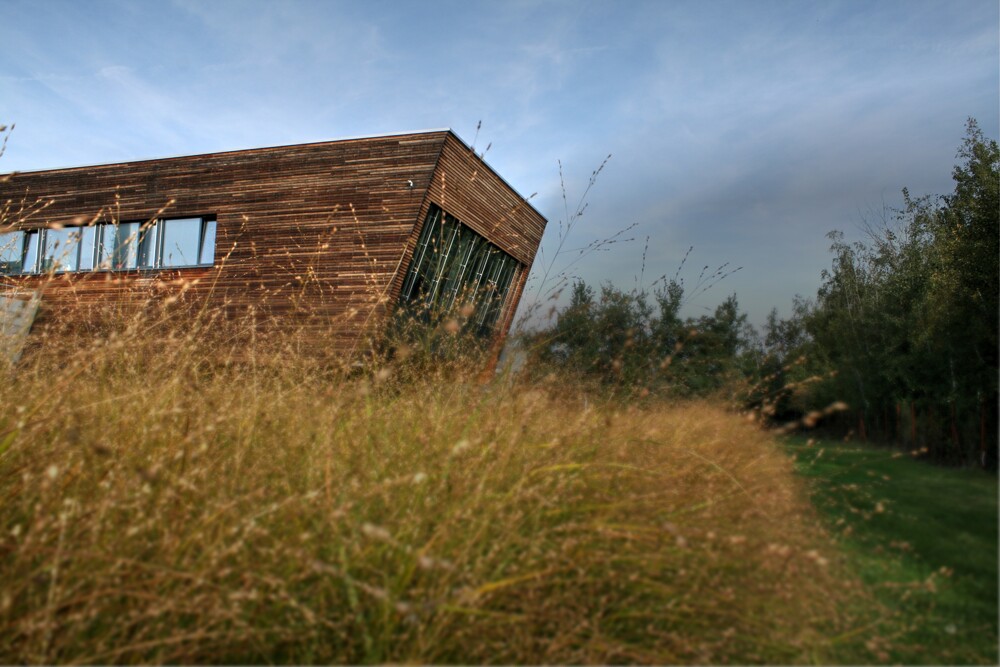 The General University Hospital in Prague (GUH) has installed advanced circadian lighting with autonomous control in the exposed coronary unit, which was developed by Lenka Maierová, an expert from the CTU UCEEB, in cooperation with the Czech company Spectrasol. This unique innovation simulates the properties of natural light during day, evening and night. It brings significant benefits - improved vitality or support for patient treatment and better concentration, alertness and mood of the staff.
The General University Hospital in Prague (GUH) has installed advanced circadian lighting with autonomous control in the exposed coronary unit, which was developed by Lenka Maierová, an expert from the CTU UCEEB, in cooperation with the Czech company Spectrasol. This unique innovation simulates the properties of natural light during day, evening and night. It brings significant benefits - improved vitality or support for patient treatment and better concentration, alertness and mood of the staff.
Biodynamic lighting in the GUH is unique in its complexity and exceptional control. The system automatically and seamlessly switches between the different modes depending on the time of day or season, meeting all the requirements for intensity, the direction from which the light comes and, above all, the spectral composition and colour of the light emitted. According to available research, circadian light in healthcare facilities has a positive effect on both hospitalised patients and exposed staff.
The new lighting will help to reduce the risk of ICU psychosis in patients, including restlessness, irritability, aggressiveness, lack of concentration or, conversely, insomnia, which affects up to 60% of patients admitted to intensive care units. Among the many causes and risk factors for these conditions are loss of time orientation and sleep and sensory deprivation. Biodynamic lighting should also reduce other complications associated with hospitalisation (infection, muscle weakness, malnutrition, etc.).
Initial subjective feedback from staff is very positive. The analysis of the results will also be carried out in collaboration with UCEEB, with whom the hospital is preparing several scientific projects aimed at evaluating the benefits of biodynamic circadian lighting. "We are at an early stage, but once everything is up and running, we are going to monitor, for example, the effect of the lighting environment on the stability of circadian rhythms and melatonin production," explains Lenka Maierová, a specialist in healthy lighting from CTU UCEEB.
"The lighting project for the GUH builds on the experience we have gained during our long-term cooperation with Spectrasol. At the same time, it was our most challenging project so far in terms of operational requirements in a healthcare facility," Lenka Maierová describes the course of her involvement in the project. This meant designing a lighting environment that synchronised the circadian system, meeting the high lighting requirements for necessary medical procedures, but at the same time not disturbing the patient and allowing them to get a good night's sleep, as well as ensuring easy operation and 100% reliability of the control system, including backup solutions for unexpected situations.


 The General University Hospital in Prague (GUH) has installed advanced circadian lighting with autonomous control in the exposed coronary unit, which was developed by Lenka Maierová, an expert from the CTU UCEEB, in cooperation with the Czech company Spectrasol. This unique innovation simulates the properties of natural light during day, evening and night. It brings significant benefits - improved vitality or support for patient treatment and better concentration, alertness and mood of the staff.
The General University Hospital in Prague (GUH) has installed advanced circadian lighting with autonomous control in the exposed coronary unit, which was developed by Lenka Maierová, an expert from the CTU UCEEB, in cooperation with the Czech company Spectrasol. This unique innovation simulates the properties of natural light during day, evening and night. It brings significant benefits - improved vitality or support for patient treatment and better concentration, alertness and mood of the staff.